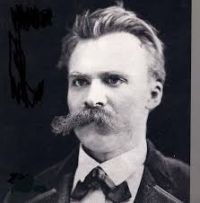THE BIRTH OF TRAGEDY (Classical Art vs. Nihilism)
Friedrich Nietzsche's "The Birth of Tragedy" serves as a profound exploration of the duality inherent in art, contrasting the Apollonian and Dionysian elements within classical Greek tragedy. With a style that blends philosophical discourse with aesthetic critique, Nietzsche marshals a rich tapestry of references to ancient Greek culture, illuminating how art embodies the tension between order and chaos. This seminal work emerges from the backdrop of burgeoning 19th-century existential thought, positioning itself against the emerging nihilism of his time, thus advocating for a resurgence of the life-affirming forces found in artistic expression. Nietzsche, a German philosopher, was deeply influenced by his classical education and personal struggles with despair, which propelled him to investigate the foundational nature of existence and meaning. His early connections with Richard Wagner and exploration of Greek tragedies led him to articulate how art, especially tragedy, can serve as a compelling antidote to the void left by a disenchanted worldview. This inquiry reflects Nietzsche's desire to foster a more vibrant appreciation for the complexities of human experience. Readers are invited to engage with "The Birth of Tragedy" not merely as a theoretical text but as a call to embrace the chaotic beauty of life through art. This work is essential for anyone seeking a deeper understanding of the philosophical underpinnings of tragedy and its relevance in confronting contemporary nihilism. In this enriched edition, we have carefully created added value for your reading experience: - A succinct Introduction situates the work's timeless appeal and themes. - The Synopsis outlines the central plot, highlighting key developments without spoiling critical twists. - A detailed Historical Context immerses you in the era's events and influences that shaped the writing.
-
Autore:
-
Traduttore:
-
Curatore:
-
Anno edizione:2024
-
Editore:
-
Formato:
Formato:
Gli eBook venduti da Feltrinelli.it sono in formato ePub e possono essere protetti da Adobe DRM. In caso di download di un file protetto da DRM si otterrà un file in formato .acs, (Adobe Content Server Message), che dovrà essere aperto tramite Adobe Digital Editions e autorizzato tramite un account Adobe, prima di poter essere letto su pc o trasferito su dispositivi compatibili.
Cloud:
Gli eBook venduti da Feltrinelli.it sono sincronizzati automaticamente su tutti i client di lettura Kobo successivamente all’acquisto. Grazie al Cloud Kobo i progressi di lettura, le note, le evidenziazioni vengono salvati e sincronizzati automaticamente su tutti i dispositivi e le APP di lettura Kobo utilizzati per la lettura.
Clicca qui per sapere come scaricare gli ebook utilizzando un pc con sistema operativo Windows




